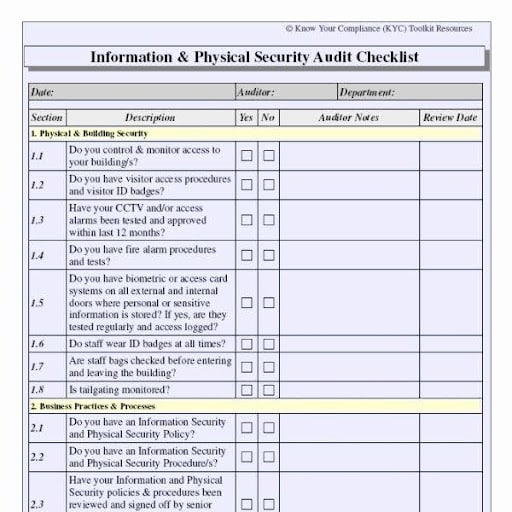Table of Contents
Why Your Business Needs a Professional Physical Security Assessment (And What You’re Risking If You Don’t)
Think about it: It’s 3 a.m., and your business alarm sounds. A security camera catches shadowy figures bypassing a broken gate, sneaking into your warehouse unseen. Before dawn, valuable assets are stolen, confidential data is breached, and your staff is frantically trying to clean up the mess.
Situations such as this aren’t mere thriller plot points—these are genuine threats companies face every day. Actually, 47% of organizations say they have suffered physical security breaches such as theft, vandalism, or unauthorized entry over the past two years. And still, too many rely on locks, cameras, and a “good enough” strategy to keep them safe.
That’s where a professional physical security assessment comes in. Think of it as a full-body scan for your business—a way to spot hidden weaknesses, fix vulnerabilities, and sleep soundly knowing you’re protected. Let’s break down why this isn’t just a “nice-to-have” but a non-negotiable for modern businesses.
Step 1: What Exactly Is a Physical Security Assessment?
A physical security evaluation (or physical security audit) is a thorough review of how well protected your business really is against everyday dangers. It’s not a matter of monitoring cameras or auditing alarms, though those are important. It’s a matter of responding to the essential questions:
- Where are your blind spots?
- How easy is it for someone to access restricted areas?
- Are your emergency protocols actually effective, or just paperwork?
Certified experts (like Phantom Solutions’ team of 250+ licensed officers) evaluate everything from your building’s layout and access points to employee habits and tech systems. They’ll spot vulnerabilities you’d never notice, like a back door that doesn’t lock properly, outdated surveillance gaps, or staff inadvertently bypassing protocols.
The objective? To make a Physical Security Assessment Checklist specific to your threats, then convert those into workable action items. Because here’s the reality: You don’t know what you don’t know. And what you don’t know could end up costing you millions.
Step 2: 5 Vulnerabilities a Professional Assessment Uncovers (That You’d Miss)
You might think your business is secure, but here’s what a physical security audit often reveals:
1. Weak Access Control
That “secure” keypad entrance? If workers prop open doors for easy access or give out codes, it’s not. Professionals evaluate entrance points, check access logs, and test the ease with which unauthorized users can slip in.
2. Outdated Surveillance Systems
Many companies employ cameras not been updated in a decade, creating blind spots in low-light spaces or not hooking up with current alarms. A physical security risk assessment determines where technology upgrades are essential.
3. Human Error Risks
Ever had an employee hold a door for a stranger without checking their ID? Or fail to set the alarm system? Evaluations examine staff routines and training deficiencies that generate unnecessary risks.
4. Natural Disaster Gaps
Would your company be able to weather a flood, fire, or power outage? Most are concerned about theft, but not environmental hazards. Audits test backup systems, emergency exits, and disaster recovery plans.
5. Regulatory Compliance Issues
Not complying with OSHA, fire codes, or industry-specific security regulations can result in fines or legal issues. Experts double-check your configuration against local and federal regulations.
Step 3: Why DIY Security Checks Aren’t Enough
Yes, you can stroll around with a clipboard and make your own Physical Security Assessment Checklist. But would you do surgery on yourself to save money? Likely not. Here’s why doing it professionally counts:
- Bias Blindness: You’re too close to your business to spot flaws. Ever missed a typo in an email you’ve read 10 times? It’s the same with security.
- Expertise: Phantom’s team brings 15+ years of experience assessing threats in hostile environments—from stadium riots to executive protection details.
- Tech Tools: Professionals use thermal imaging, penetration testing, and advanced software to simulate breaches you’d never think to try.
One retail customer learned the hard way. They’d put in high-end cameras but didn’t know a tree branch obstructed the view of their loading dock—a loophole thieves took advantage of for months. A physical security audit discovered the problem in less than an hour.
Step 4: How Phantom Solutions’ Assessments Work: No Fluff, Just Results

Wondering what to expect? Here’s how we turn vulnerabilities into strengths:
- On-Site Walkthrough: Our experts tour your facility, noting entry points, storage areas, and employee workflows. Think of it like a spy mission—but we’re on your side.
- Tech Analysis: We test cameras, alarms, access systems, and cybersecurity integrations (yes, physical and digital security are connected).
- Staff Interviews: Employees often know risks management doesn’t. We’ll chat with your team to uncover “small” issues before they become big problems.
- Threat Simulation: Using real-world scenarios (e.g., “What if a protest erupts outside?” or “How fast can someone reach your server room?”), We pressure-test your defenses.
- Clear Reporting: No jargon—just a prioritized action plan with timelines, budgets, and ROI estimates.
Conclusion
In a time when threats are both varied and advanced, an active approach to physical security is not only wise—it’s critical. Periodic physical security reviews enable companies to remain one step ahead of prospective threats, safeguarding their assets and people.
Don’t wait for a security breach to make vulnerabilities obvious. Take the first step today to strengthen your business against unexpected threats. You would not leave your front door unlocked at night. Why jeopardize your business’s security with guesswork, then? Phantom Solutions has shielded $20 million in assets for 500+ customers—from Fortune 500 CEOs to festivals with 50,000+ attendees.
Your next step?
1.Call (702) 290-2799 for a free consultation.
2.Get a customized Physical Security Assessment Checklist.
3.Turn vulnerabilities into unbreakable strengths.
